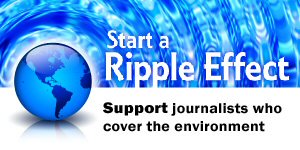SEJournal Online is the digital news magazine of the Society of Environmental Journalists. Learn more about SEJournal Online, including submission, subscription and advertising information.
BP is the focus of an extraordinarily toxic event as its oil spill continues in the Gulf of Mexico. But four other petroleum companies that operate in the United States routinely emit far more airborne toxic material in each typical year than BP (ExxonMobil, Sunoco, ConocoPhillips, Valero), and four more are right behind BP (Royal Dutch Shell, Tesoro, Petroleos de Venezuela S.A., Hess). All told, 4 of the worst 12 air polluters are petroleum companies, as are 9 of the worst 37 (with a number of others farther down the list), according to the University of Massachusetts Political Economy Research Institute.
This resource also can be used to look at other groupings of companies, such as utilities, or drug, chemical, or metals manufacturers, or to look at any of the individual companies.
You can get a quick feel for a company's toxic facilities by clicking on the company name in the master list at the URL noted above. In addition, you can get more detailed data on each company and facility — such as the specific toxics released, their quantities, and trends for releases by substance and quantity — via resources such as the Toxics Release Inventory (TRI) and EPA's Risk-Screening Environmental Indicators (RSEI), which are the original data sources for the ratings.












 Advertisement
Advertisement 



